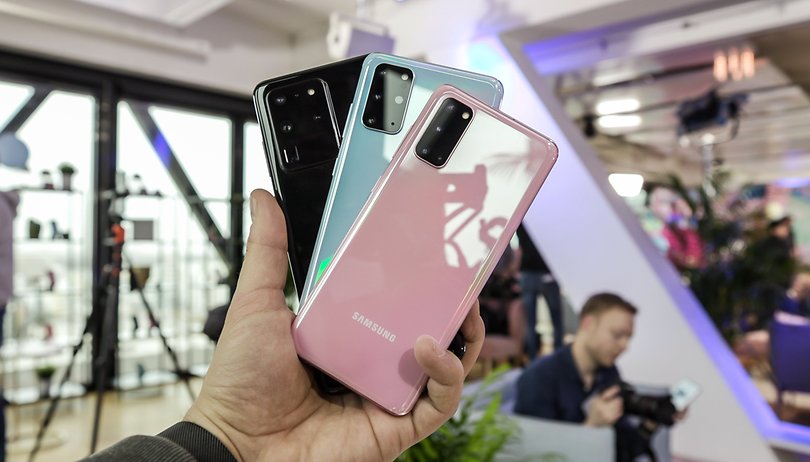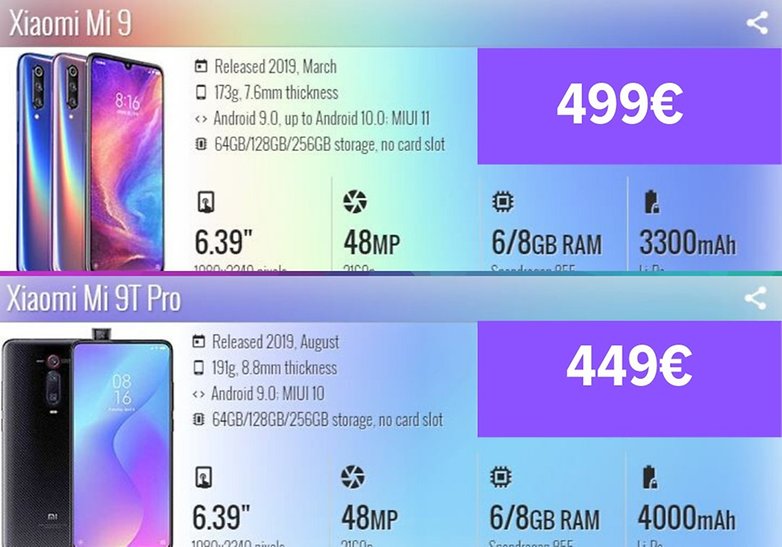The 'flagship' smartphone is dead, autopsy of an old-world concept


Always Plus, Pro, Max, T or Ultra? The relevance of the 'flagship' is sinking in the smartphone industry. This notion that once defined high-end smartphones, the peak technological achievements of each manufacturer, has lost all meaning and, above all, identity.
Shortcuts:
- The iPhone effect, when the flagship becomes the entry-level product
- When every smartphone is a flagship, none of them are
- Is there future hope for the old-school flagship?
Without falling into the "it was better before" trap, the time when Apple and Samsung set the pace in the market by releasing one flagship per year is well and truly over. The rise of new players such as Xiaomi/Redmi and OnePlus with their "flagship killers", the increasingly blurred boundary between high-end and mid-range and the inconsistent segmentation by manufacturers of their catalogs are partly responsible for this.
The flagship is dead, but we're not talking about a commercial death here. So it would be dishonest to defend my point by telling you that less than 1 percent of consumers are willing to invest $1,000 or more in a luxury smartphone. It would also be out of place not to brandish a ranking of the world's best-selling smartphones in 2019, in which no flagship is on the podium.
Flagships still exist, almost nobody buys them because they're too expensive, but that's nothing new. What has changed is that this range of products, once clearly visible to the consumer, is losing its identity. So it is rather the notion of the flagship that is dying more than the products themselves.
The iPhone effect, when flagship becomes entry-level
With the launch of the iPhone 11 in September 2019, Apple has totally turned its catalog upside down. The iPhone 11, although a numbered model (like the iPhone X or iPhone 8 for example, both flagships), is now the entry-level phone of the new line-up of the Apple brand. Apple has therefore aligned its iPhone 11 with the iPhone XR model, both in terms of price and technical ambitions.
A logical choice when we see the record sales of the iPhone XR since its release in the fall of 2018 and that explains why Apple has left it in its official 2019-2020 catalog. But a strange choice despite everything when we know that the iPhone XR was presented as a 'low-cost' model, a little more premium than an iPhone SE but below an iPhone XS (the flagship, therefore).
With this iPhone effect, we can see that the model that was supposed to be the flagship of the brand is relegated to the status of a gateway to a catalog that no longer makes much sense. We can talk about a range within the range, with a low-to-high end represented by the iPhone 11, a mid-to-high end represented by the iPhone 11 Pro and the ultra-high-end represented by the iPhone 11 Pro Max.
This new segmentation is totally cryptic for a consumer who is not a technophile. And this phenomenon is not exclusive to iPhones - it is observed with the Samsung Galaxy S20/S20+, S20 Ultra. The mid-range is not spared either. Xiaomi launched five variations of the Mi 9 in the space of a few months illustrate this perfectly.
So we understand that the flagship itself is no longer clearly identifiable. But the other problem is that it is also increasingly difficult to distinguish it from the mid-range. The fault lies with the so-called 'flagship killers'.
If every smartphone is a flagship, none of them are
By 2015, The Verge was already announcing the death of the flagship as we know it. In a hopeful conclusion, the site relativized this death by celebrating the fact that in reality there are (almost) no bad smartphones on the market these days.
"Simultaneous with the homogenization of software has been a plateauing of hardware capabilities. Every smartphone has a great display, a responsive touchscreen, and at least reasonable build quality. Many, especially in China, even offer fingerprint sensors, fast cameras, and other previously fancy extras at a fraction of yesteryear’s flagship prices," wrote the American site give years ago, and it could not have been more accurate.
Unlike Oppo, which is landing with its big hooves on a new market with smartphones starting at €1,000, new Chinese players like Xiaomi and OnePlus have finished burying the flagship by erasing the border between high-end and mid-range.
We then witnessed the advent of the famous 'flagship killers'. Smartphones with gleaming technical specifications, which have nothing to envy to the top of the range, but which are priced close to the middle of the range (less than €500). Of course, OnePlus has somewhat abandoned this philosophy by inflating its prices to satisfy its ambitions to be seen as a premium brand. But the fact remains that its high-end models like the OnePlus 7T are €300 cheaper than an iPhone 11. The latter is nevertheless considered as the 'entry-level' model of Apple, as explained above.
It is, therefore, an inverse phenomenon to the iPhone effect, detailed at the beginning of the article, which occurs. Here, a model that could be seen as mid-range from a pricing point of view is actually the top of the basket - the flagship, therefore - of the brand. In this logic, one can congratulate oneself as The Verge on a leveling upwards, with smartphones becoming all "top of the range" globally.
And I'm not just talking in terms of price. Overall, spec sheets are looking more similar across the price spectrum. You don't really have to pay €800 or even €1,000 to have a premium device in your hands. Even the Redmi Note 8T, although priced under €200, gave me a premium smartphone feeling when I was able to test it last December.
But I can't help being a bit more pessimistic (or realistic?) than my colleagues from The Verge. If all smartphones are flagships, it means that none of them really are. With no clear line between the top and middle of the line, consumers have a hard time figuring it all out, which is why we sometimes see price aberrations like the difference between the Xiaomi Mi 9 and the Xiaomi Mi 9T Pro.

Released in March 2019, the Xiaomi Mi 9 was the flagship of the brand in 2019. It was sold at €500. Released four months later, the Xiaomi Mi 9T Pro has exactly the same technical specifications as the Mi 9 (with a larger battery) for €50 less.
Ditto with the OnePlus 7T which, with its launch price of €559, was much more interesting than the OnePlus 7 Pro launched a few months earlier (€200-300, same camera, better processor). Competing with its own flagship with a model of almost equivalent configuration but cheaper seems to me totally inconsistent. But it's especially frustrating for the buyer who fell for the more expensive model, thinking he could keep it for a long time before it's outdated.
Does the flagship have to come back from the dead
This feeling that a large purchase has paid off is part of the user experience that a flagship is supposed to provide. But the marketing obsolescence (not programmed) induced by the unbridled release of new declinations of the same model, often cheaper, produces the opposite effect.
The flagship is expensive, precisely because it serves as a technological and marketing showcase for the brand. A minority buys it at a high price, which allows the concept of each brand to evolve, to improve it to the point of democratizing it at a more affordable price. That's why the death of the flagship is not such good news.
In 2020, for example, it's no longer exceptional to have a €200 smartphone with three cameras, whereas in 2018, you had to pay the price of a Huawei P20 to benefit from this technology. The flagship is an identity card, a figurehead for the manufacturer that allows it to stand out from the crowd. If everyone is a flagship, no one is a flagship.
It remains to be seen whether folding smartphone technology or 5G will mature enough to give manufacturers a new impetus. This will enable the emergence of new high-end models of a new kind, which have a real identity through their form factor or the technologies they embody. A certain cachet, a "je-ne-sais-quoi" that makes you want to forget their exorbitant price just for the pleasure of owning something unique and not being like everyone else.
What do you think about it? Do you think the flagship smartphone is really dead and buried or will it find a second life?




















I never bought into the "flagship" crap. Look what Oppo did when they "created" OnePlus...billed as the flagship killer. High specs, lower cost, build a RABID fan base, come out with 2 new models per year, jack the price each year, making them more colorful & stylish and now their prices are just about in the flagship area.
I usually buy a new phone, when a new model is announced, by waiting for the price to drop on last years "best thing". Better bang for the buck in my opinion.
Apple started the trend of making mobile expensive and they got away with it,so Samsung joined the Trend,and now the others are copying them both,until some regulations are brought in,then nothing will be done to stop phone produces over pricing there phones,sim deals as now over taken phone contracts,because 24 month is to long stuck in a contract,and people are staying loyal to the phones they have and got so use to using
-
Admin
Mar 10, 2020 Link to commentNo matter what the top of range is what makes an intelligent consumer buy a phone is a balance between needs, specs and available cash. If you buy a phone to show that you have the most a expensive, top of the range, exclusive gadget and then use only 5 % of its features you just show that you have more money than brains
I'd credit the Moto g for killing flagships, not Apple. It gave you reasonably high performance at a value price. Still does.